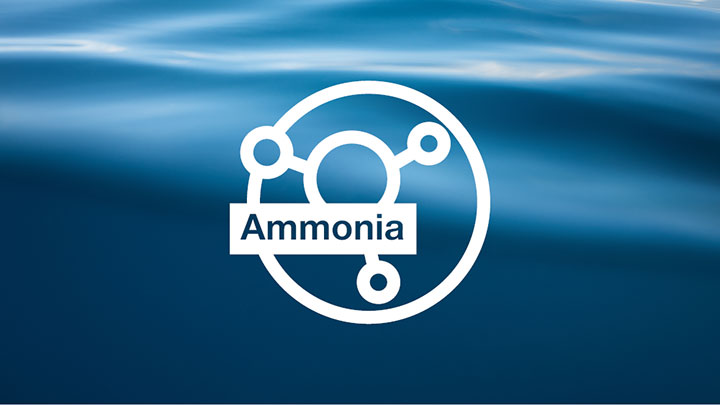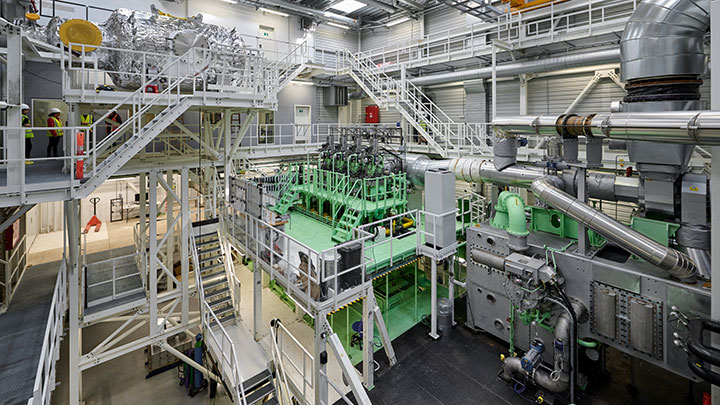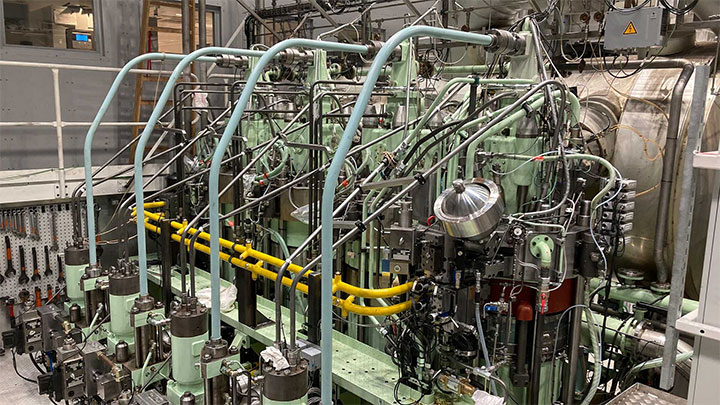Ammonia for shipping
Ammonia is a synthetic product obtained from fossil fuels, biomass or renewable sources (wind, solar, hydro or thermal). When generated by renewable sources, ammonia will have virtually no carbon footprint or emit any CO2, SOx, particulate matter or unburned hydrocarbons when combusted.
Main advantages:
- Zero CO2 emissions released during combustion
- Significantly lowers SOx and particulate matters emissions
- Relatively easy to store
Focus areas:
- High ignition energy required
- Required storage volume for ammonia as fuel
- Safe handling of ammonia Read more

Two-stroke ammonia engine development schedule

Learn more about ammonia engines
-

Ammonia engine testing
Engineers are developing a two-stroke, dual-fuel ammonia engine that can reduce a ship’s emissions to zero.
-

MAN B&W ammonia engine development
The MAN B&W two-stroke ammonia engine will meet future market demands for green ship propulsion including retrofits.
-

The case for two-stroke ammonia engines
Why newbuild and retrofit ammonia engines are key for the maritime energy transition.
Frequently asked questions
How can liquid ammonia be stored?
Can ammonia be used as fuel?
Ammonia can be used as an alternative fuel. Research explores the use in different sectors. The two-stroke ammonia engine by MAN Energy Solutions will offer the possibility to use this future fuel as a resource for shipping.
What are the technical challenges of ammonia?
There are several challenges concerning ammonia.
- Ammonia is more difficult to ignite compared to other fuels. It burns slowly and has a high evaporation enthalpy. Furthermore, the emission characteristics will be different from conventional engines.
- Another factor to recognize is the on-board handling and safety. Ammonia itself is toxic and possesses an unacceptable odor even in low concentrations. Although the handling is known from ammonia tankers, it is significantly more difficult than that of LPG or methanol. Also, no venting to the surroundings is permitted
What are the advantages in the use of ammonia?
- Ammonia is carbon- and sulphur-free and gives a clean combustion with near-zero generation of CO2 or SOX
- Its volumetric energy density is higher than that for hydrogen.
- As it is already widely used in the industrial process as an agricultural fertilizer, it is a commercially attractive product.
Continue reading
-
MAN B&W two-stroke engine operating on ammoniapdf, 733 KB
Other future fuels
MAN ExpertTalk: Update on MAN B&W ammonia engine development
Having completed more than 12 months of testing on a single cylinder running on ammonia, the full-scale engine testing started at Research Centre Copenhagen in November 2024.
Tune in for the recording of out MAN ExpertTalk to learn more about this major milestone in the development of new two-stroke technology.
You can look forward to hearing more about our progress and learnings, the design of the safety systems for fuel handling as well as ammonia auxiliary systems.
This MAN ExpertTalk is hosted by Christian Ludwig with presentations by subject matter experts Nikolaos Kourtidis and Ian Kumaraswamy.MAN Energy Solutions is now Everllence.
We have adopted a new brand name and moved to a new domain: www.everllence.com. This page will also be relocated there shortly. We are working on shifting all pages to www.everllence.com.
